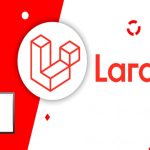CSS Learning Tutorial P001
What is CSS?
- CSS stands for Cascading Style Sheets
- CSS describes how HTML elements are to be displayed on screen, paper, or in other media
- CSS saves a lot of work. It can control the layout of multiple web pages all at once
- External stylesheets are stored in CSS files
SS Comments
Comments are used to explain the code, and may help when you edit the source code at a later date.
Comments are ignored by browsers.
A CSS comment is placed inside the <style> element, and starts with /* and ends with */
CSS Padding
The CSS padding properties are used to generate space around an element’s content, inside of any defined borders.
With CSS, you have full control over the padding. There are properties for setting the padding for each side of an element (top, right, bottom, and left).
Padding – Individual Sides
CSS has properties for specifying the padding for each side of an element:
padding-toppadding-rightpadding-bottompadding-left
CSS Setting height and width
The height and width properties are used to set the height and width of an element.
The height and width properties do not include padding, borders, or margins. It sets the height/width of the area inside the padding, border, and margin of the element.
CSS height and width Values
The height and width properties may have the following values:
auto– This is default. The browser calculates the height and widthlength– Defines the height/width in px, cm, etc.%– Defines the height/width in percent of the containing blockinitial– Sets the height/width to its default valueinherit– The height/width will be inherited from its parent value
The four links states are:
a:link– a normal, unvisited linka:visited– a link the user has visiteda:hover– a link when the user mouses over ita:active– a link the moment it is clicked
Block-level Elements
A block-level element ALWAYS starts on a new line and takes up the full width available (stretches out to the left and right as far as it can).
Examples of block-level elements:
- <div>
- <h1> – <h6>
- <p>
- <form>
- <header>
- <footer>
- <section>
Inline Elements
An inline element DOES NOT start on a new line and only takes up as much width as necessary.
This is an inline <span> element inside a paragraph.
Examples of inline elements:
- <span>
- <a>
- <img>
The position Property
The position property specifies the type of positioning method used for an element.
There are five different position values:
staticrelativefixedabsolutesticky
Elements are then positioned using the top, bottom, left, and right properties. However, these properties will not work unless the position property is set first. They also work differently depending on the position value.
The z-index Property
When elements are positioned, they can overlap other elements.
The z-index property specifies the stack order of an element (which element should be placed in front of, or behind, the others).
The float Property
The float property is used for positioning and formatting content e.g. let an image float left to the text in a container.
The float property can have one of the following values:
left– The element floats to the left of its containerright– The element floats to the right of its containernone– The element does not float (will be displayed just where it occurs in the text). This is defaultinherit– The element inherits the float value of its parent






Leave a Reply